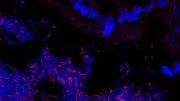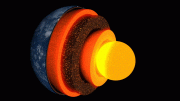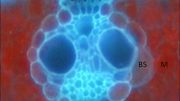
Scientists made a tenfold improvement in measuring the electron’s shape, finding it to be rounder than certain extensions of the Standard Model, including some versions of Supersymmetry, predict. This theory introduces new particles, potentially explaining phenomena like dark matter, a mysterious substance believed to compose most of the universe.
In a newly published study, the ACME collaboration reports the most precise measurement to date of the electron’s shape, improving it by a factor of more than 10 and showing the particle to be rounder than predicted by some extensions of the Standard Model.
A small band of particle-seeking scientists at Yale and Harvard has established a new benchmark for the electron’s almost perfect roundness, raising doubts about certain theories that predict what lies beyond physics’ reigning model of fundamental forces and particles, the Standard Model.
“We know the Standard Model does not encompass everything,” said Yale physicist David DeMille, who with John Doyle and Gerald Gabrielse of Harvard leads the ACME collaboration, a team using a strikingly different method to detect some of the same types of particles sought by huge experiments at the Large Hadron Collider (LHC) in Europe. “Like our LHC colleagues, we’re trying to see something in the lab that’s different from what the Standard Model predicts.”
ACME is looking for new particles of matter by measuring their effects on the shape of the electron, the negatively charged subatomic particle orbiting within every atom.
In research published on December 19 in Science Express, the team reported the most precise measurement to date of the electron’s shape, improving it by a factor of more than 10 and showing the particle to be rounder than predicted by some extensions of the Standard Model, including some versions of Supersymmetry. This theory posits new types of particles that help account, for example, for dark matter, a mysterious substance estimated to make up most of the universe.
Researchers said they have shown that the electron’s departure from spherical perfection — if it exists at all — must be smaller than predicted by many theories proposing particles the Standard Model doesn’t account for. If the electron’s shape is too round, many of these theories will be proven wrong, they said.
Many variants of Supersymmetry predict a less round shape for the electron than the ACME team found experimentally. If the particles predicted by those versions of Supersymmetry existed, they would have caused greater deformation of the electron, researchers said.
The ACME project looked for a particular deformation in the electron’s shape known as an electric dipole moment.
“You can picture the dipole moment as what would happen if you took a perfect sphere, shaved a thin layer off one hemisphere and laid it on top of the other side,” said DeMille, who helped establish previous landmark limits in electron deformation. “The thicker the layer, the larger the dipole moment. Now imagine an electron blown up to the size of the earth. Our experiment would have been able to see a layer 10,000 times thinner than a human hair, moved from the southern to the northern hemisphere. But we didn’t see it, and that rules out some theories.”
The ACME researchers measured the dipole moment using electrons inside the polar molecule thorium monoxide. The molecule’s properties amplify the electron’s deformation and diminish the possibility of effects that could fool researchers into thinking they had seen a tiny deformation when none exists.
“It is amazing that some of these predicted supersymmetric particles would squeeze the electron into a kind of egg shape,” said Harvard’s Doyle. “Our experiment is telling us that this just doesn’t happen at our level of sensitivity.”
Gabrielse, also of Harvard, said: “It’s unusual and satisfying that the exquisite precision achieved by our small team in a university lab probes the most fundamental building block of our universe at a sensitivity that complements what is being achieved by thousands at the world’s largest accelerator.”
Reference: “Order of Magnitude Smaller Limit on the Electric Dipole Moment of the Electron” The ACME Collaboration, J. Baron, W. C. Campbell, D. DeMille, J. M. Doyle, G. Gabrielse, Y. V. Gurevich, P. W. Hess, N. R. Hutzler, E. Kirilov, I. Kozyryev, B. R. O’Leary, C. D. Panda, M. F. Parsons, E. S. Petrik, B. Spaun, A. C. Vutha and A. D. West, 19 December 2013, Science.
DOI: 10.1126/science.1248213
Co-authors are J. Baron, W.C. Campbell, Y. V. Gurevich, P. W. Hess, N. R. Hutzler, E. Kirilov, I. Kozyryev, B. R. O’Leary, C. D. Panda, M. F. Parsons, E. S. Petrik, B. Spaun, A. C. Vutha, and A. D. West.
The National Science Foundation and the National Institute of Standards and Technology provided support for the research.








An Electron the size of Earth, is it possible that could ever exist just curious?
Goof-ball. Electrons do not have ‘shape’. They are wave/particles depending upon how they are observed. electrons have probability orbitals depending on their energy levels. Geez.
Well, science has become aware that the Earth during the unusual period of delayed magnetic reversal exposes all to stronger cosmic rays from the equator of the sun, and longer due to the changed shape to the heliosheath. So, is it possible that our conjectures about space and time are actually construed to an incorrect version of our system?
Is it possible that the continuous stream of energy from the equator of our sun the normal modus operandi? That our sun is a magnatar that has lost so much energy that the life adapted to it now functions in a make-do mode with lesser and looser energy? That our assumptions are based on the make-do instead of what was?
If that is correct then we would find –just like we are now—that all sorts of new compounds and molecular and atomic arrangements are possible under pressure, even compounds (http://www.sciencedaily.com/releases/2013/12/131219142138.htm) at room temperature exist. All due to the solar equatorial emissions that have appeared in the past just like now to disappear after a short while.